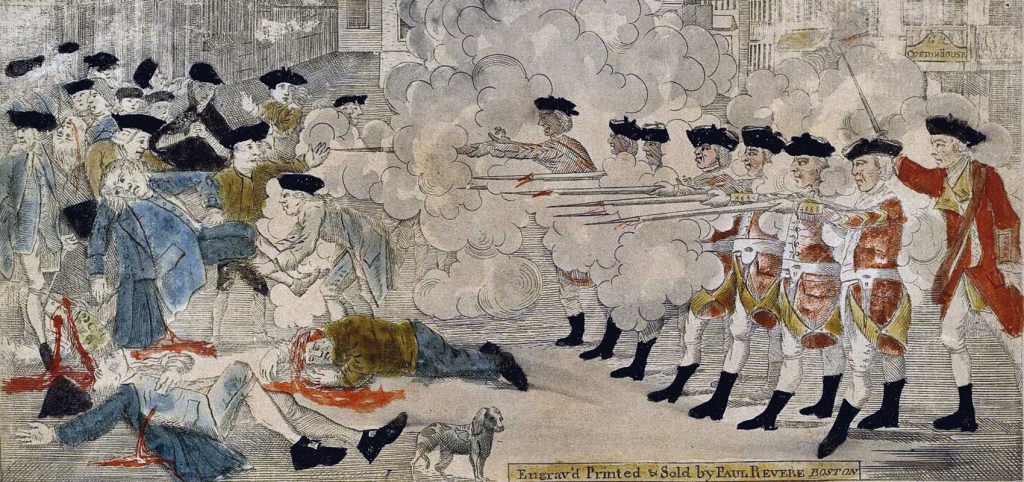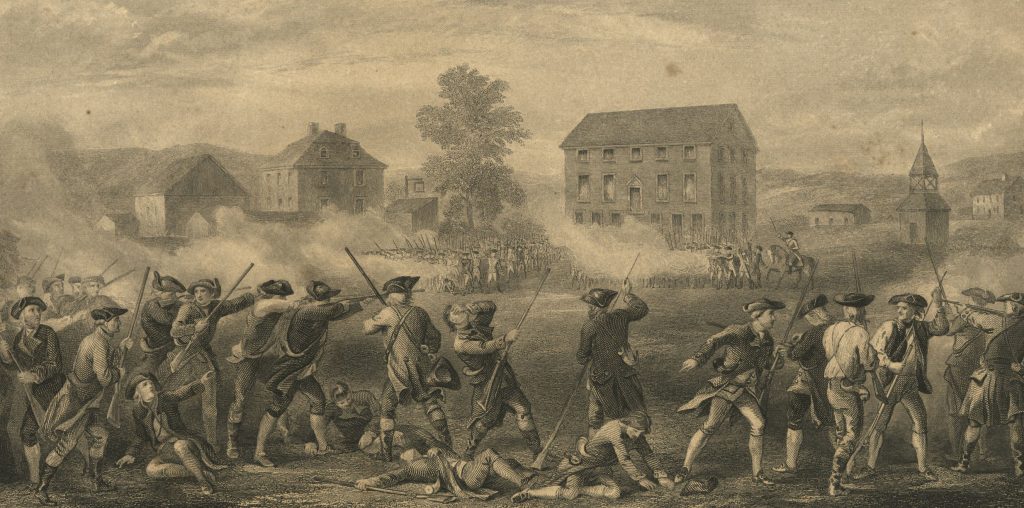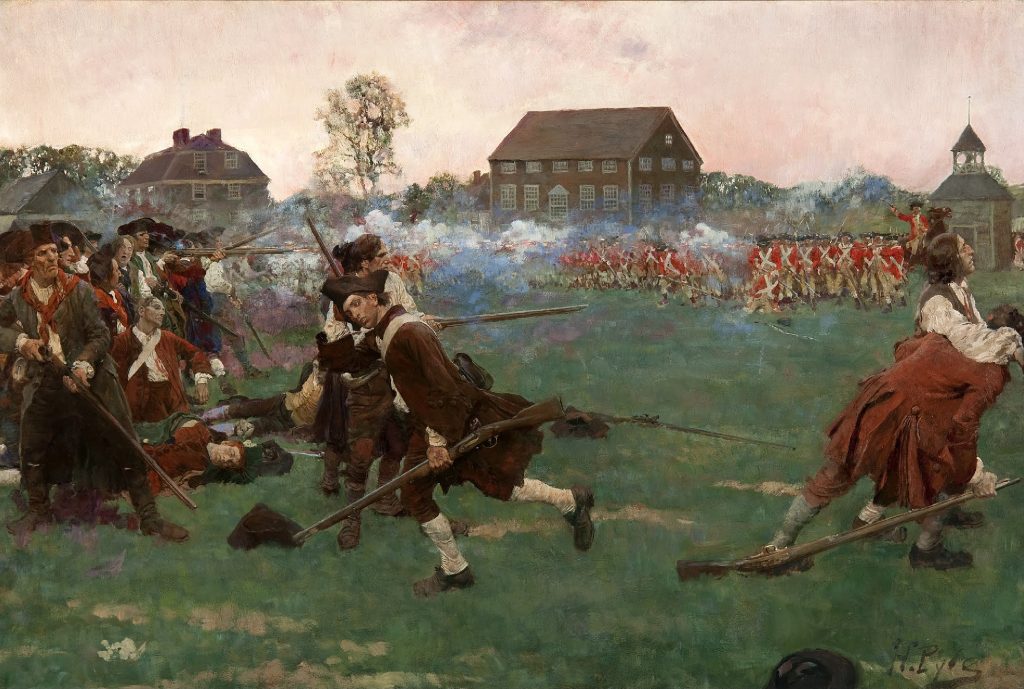Imagining the Battle of Lexington challenges students to analyze and interpret images of the Battle of Lexington created over 123 years. Students can be challenged to analyze these images themselves, but this lesson is sufficiently complicated that it might more appropriately serve as the basis for a short lecture, addressing each image in chronological order, giving students opportunities to offer their views of what the original artists intended, and why their successors imagined the battle in different ways.
The goal of such a lecture and discussion, and of this lesson more generally, is to introduce students to the challenge of interpreting images as documents that convey meaning about the intentions and ideas of their creators, and in particular what their creators thought about some aspect of the American Revolution. Questions to pose to students about the images are indicated in bold red type.
The essential facts about the Battle of Lexington are well known. On April 19, 1775, a British force marching toward Concord, Massachusetts, encountered the Lexington militia drawn up on the town green. The British commander ordered the militia to disperse. Shots were fired, then a ragged volley from the British. Some of the militiamen returned fire but those who weren’t killed or wounded were driven off. Eight of the militiamen were killed and ten were wounded. One British soldier was wounded. This battle—barely a skirmish by most standards—was the first exchange of gunfire in the Revolutionary War. Questions about the battle remain, including who fired the first shot and how much resistance the militia offered before dispersing. Evidence about these questions is limited and some is conflicting.
Photography was not invented until decades later, so there are no photographs of the Battle of Lexington. The first depiction of the battle was created by two young militiamen, Ralph Earl and Amos Doolittle. Neither witnessed the battle. They visited the site a few weeks later, spoke with participants, and created a sketch of the battle. Earl probably drew the picture — he later became an accomplished artist. Doolittle, a Connecticut silversmith, took the drawing and engraved it on a printing plate. He published the engraving in December 1775. The original drawing was probably lost or destroyed.
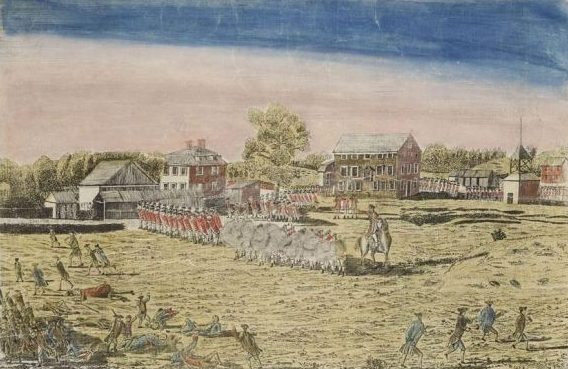
One of the first things that occur to any viewer is that the militiamen in the engraving don’t look very organized and aren’t particularly heroic. Most are leaving the scene. The British are delivering an organized volley. None of the Americans is returning fire. A few are looking toward the British but most are fleeing, leaving the green scattered with dead and wounded men.
The first question students should consider is: Why did Earl and Doolittle depict the battle in this way?
The simplest answer is that this is what happened — that witnesses described the scene to Earl and Doolittle and the two artists tried to depict the battle as faithfully as possible.
This may be correct, but it leads to a more interesting question: Why did Earl and Doolittle choose this moment of the battle to depict? According to contemporary accounts of the battle, the militia were drawn up in a line, defying the British, just a few moments before the firing started. Why didn’t Earl and Doolittle choose to depict that moment of proud defiance? Why did they choose the moment, seconds later, when the militia dispersed in defeat?
There are at least two plausible answers. Students may come up with others. The first is that Earl and Doolittle did not think highly of the Lexington militia and chose to depict it as a disorganized rabble. This answer has a surprising support: although Earl and Doolittle were patriot militiamen in 1775, Earl was skeptical about the patriot cause and by early 1776 became a Loyalist. He later fled to Britain where he studied painting and began his career as an artist. He returned to the United States after the Revolutionary War was over.
Viewed with these facts in mind, the engraving might be viewed as a Loyalist version of the battle. There is, however, one serious problem with this interpretation. Amos Doolittle remained a patriot, and would not have willingly associated himself with a Loyalist depiction of the battle. Doolittle was the publisher and was responsible for distributing the image.
The second plausible answer is that Earl and Doolittle chose this moment because they wanted to depict the Lexington militiamen as victims of British tyranny and oppression. The fact that they sought to convey was that the Lexington militia had been drawn up on the Lexington Green and were shot down by British soldiers. The reaction the artists sought to illicit from people who saw the engraving was outrage. They clearly hoped that outrage would win people for the patriot cause.
Viewed in this way, the image bears comparison with Paul Revere’s 1770 engraving, The Bloody Massacre perpetrated in King Street, depicting the Boston Massacre. That engraving is the subject of another lesson in Imagining the Revolution, but if you present the Revere engraving in this lesson, ask students: Why did Revere depict the scene in this way? As with the later Earl and Doolittle image, one plausible answer is that he was trying to present an accurate depiction of the scene. That may be true, but it leads to the question: Why did Revere depict this moment in the event, when the British are firing and Bostonians are falling? The most plausible answer is that Revere wanted to stir outrage in his audience, so he depicted the Bostonians involved in the street violence of March 5, 1770, as innocent victims of brutal British troops. In both engravings, the artists avoid the fact that the colonists may have provoked the British fire. They did not want to memorialize defiance. They wanted to memorialize innocence in order to win support.
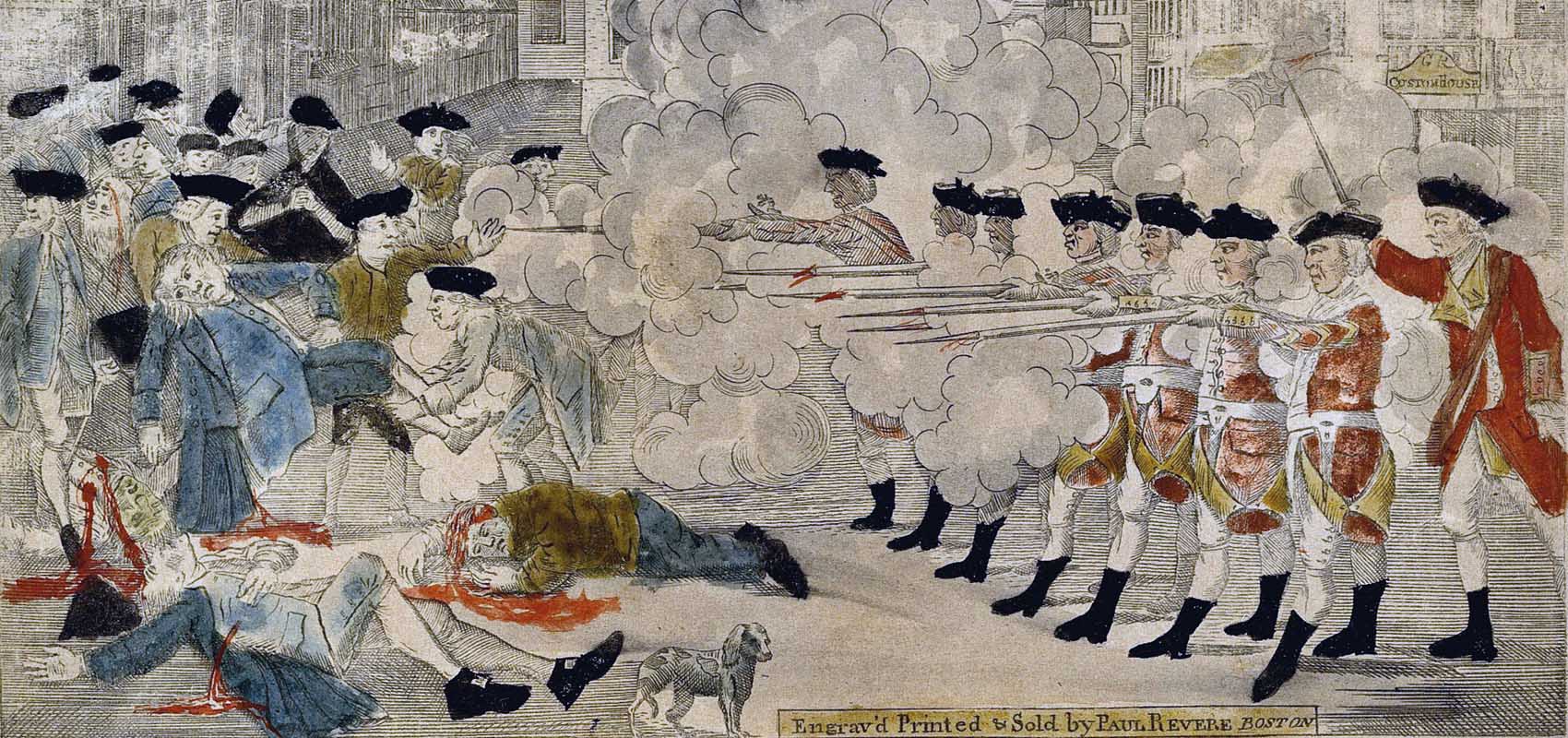
Except for some entirely fanciful depictions, Earl and Doolittle’s image of the events on Lexington Green remained the dominant image of the battle for more than fifty years. It was reproduced many times in a variety of forms, but the important aspects of the image varied little. Then in 1830, a Boston printing firm, Pendleton’s Lithography, published a lithograph of the battle drawn and engraved by an artist named Swett — he may have been Cyrus A. Swett, an engraver active in Boston for many years. A lithograph is a print made from an etched stone rather than an engraved metal plate. Lithography became a common method for mass producing prints in the nineteenth century. Swett based his lithograph, The Battle of Lexington, on the Earl and Doolittle image, but with a major difference. Most of the militiamen, as in the Earl and Doolittle image, are dispersing, but several are returning the British fire.
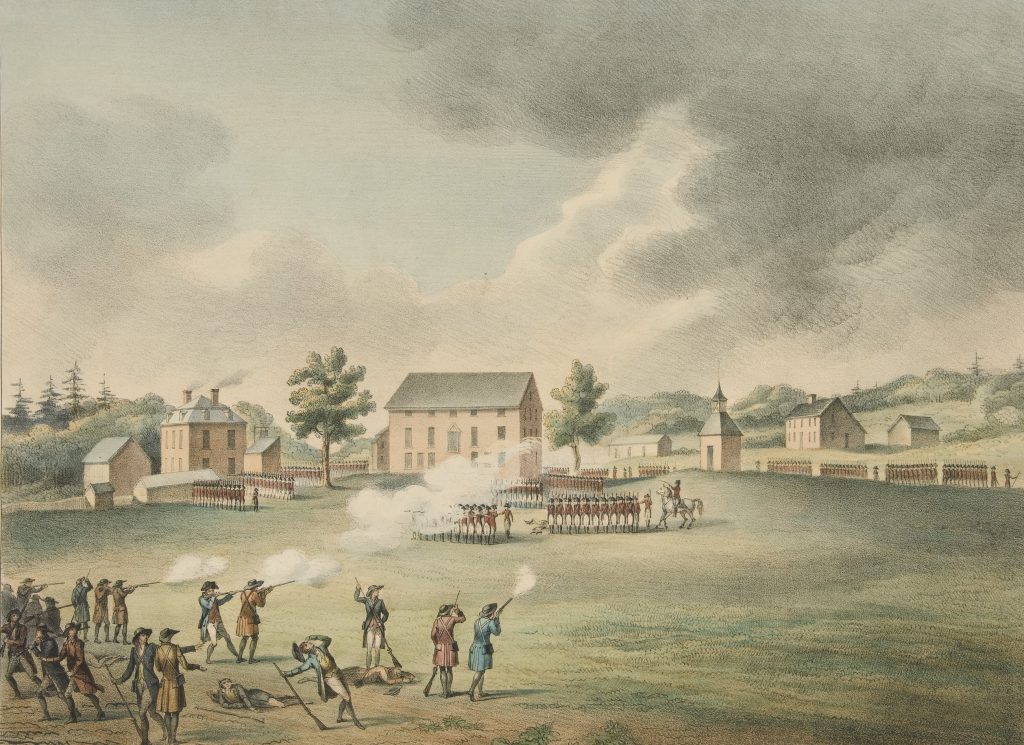
Why the change? Why did Swett depict the militia shooting at the British? These are questions worthy of classroom discussion. There is no definitive answer. We aren’t sure of the identity of the artist, much less what motivated him. But we can offer some informed hypotheses, and lead students to do the same.
Remind the students that Earl and Doolittle chose to depict the Lexington militiamen as innocent victims of British tyranny in order to win people to the patriot cause. Would an artist working in 1830 have felt the same motivation? If not, what might have motivated him to depict the battle as he did?
An artist working in 1830 would not have felt much need to present the Lexington militia as innocent victims in order to justify resistance to the British. The United States had been an independent nation for more than fifty years and had survived a second war with Britain. By 1830 Americans were proudly nationalistic, and they had come to regard the soldiers of the Revolutionary War as heroes rather than victims. Imagining the Battle of Lexington as a clash in which American heroes fired back fit the spirit of the time.
Another possible reason the Swett depicted militiamen firing on the British had to do with local pride. The citizens of Lexington were proud of their town’s status as the site of the first battle of the Revolutionary War. Citizens of nearby Concord, however, disputed their claim. Concord townsmen insisted that what had happened at Lexington was more of a massacre than a battle, and many of them pointed to the Earl and Doolittle image to prove their case. They claimed that the first battle of the Revolutionary War had happened later on the morning of April 19, when the British reached Concord and were met by heavy fire at the Old North Bridge just beyond the town. Swett and his employers at Pendleton’s Lithography apparently sided with Lexington in this dispute. They may have chosen to depict at least some of the Lexington militiamen firing their muskets in order to defend Lexington’s claim to have been the site of the first battle of the war.
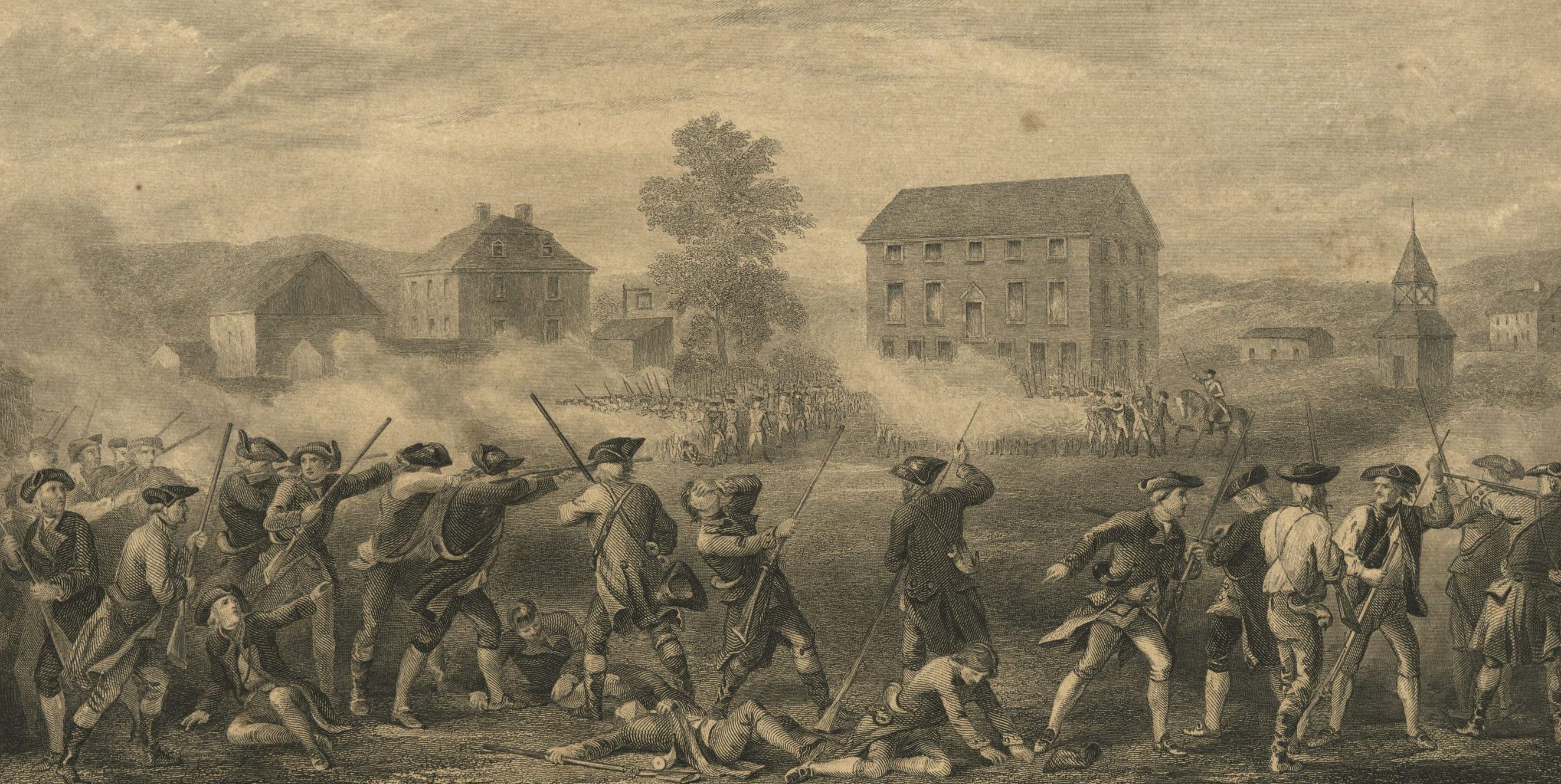
The number of courageous militiamen firing on the British grew with each new image of the battle. In 1859, a Boston artist, designer and architect named Hammatt Billings created an image originally intended to be cast in bronze as part of a large monument to the Battle of Lexington. The monument was never built, but the image was published several times—first in this version, engraved in 1861 on the membership certificate of the Lexington Monument Association, and later in Charles Hudson’s History of the Town of Lexington in 1868. Hammatt Billings and Charles Hudson were promoters of the monument and defenders of Lexington’s claim to have been the site of the first battle of the war. Even more of the militiamen are firing on the British in Billings’ version of the battle. This was a vision of the Battle of Lexington that made sense to the generation of Americans who lived through the Civil War. The heroic militiamen may be overwhelmed by superior numbers, but few shrink from the fight.
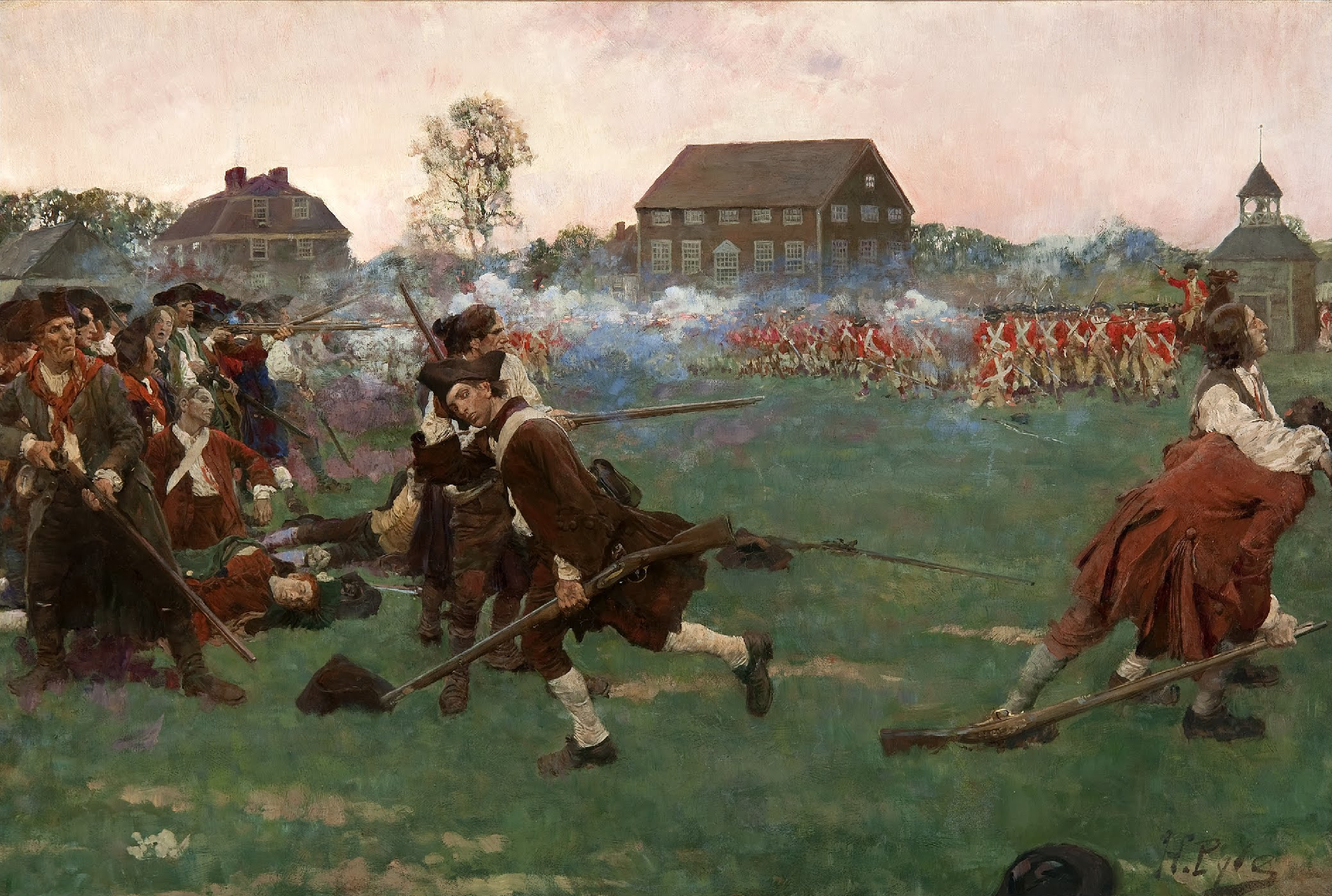
The heroic militiamen appeared again in Howard Pyle’s 1898 painting of The Fight on Lexington Common, April 19, 1775. Pyle was one of the preeminent American magazine illustrators of the late nineteenth and early twentieth centuries. As an engraving in the popular magazine, Scribners Magazine, Pyle’s depiction of the battle reached a national audience. In Pyle’s version of the battle, most of the militiamen stand their ground.
Having examined four different images of the Battle of Lexington and explored their differences, students should conclude the lesson by reflecting on this question: What do these images, created over 123 years, have in common?
They illustrate the influence a single image can have on the way generations of Americans imagine an event. While later artists abandoned Earl and Doolittle’s depiction of innocent Lexington militiamen being victimized by the British, they never abandoned Earl and Doolittle’s perspective on the battle. They all depicted it from the American side, putting the viewer in the position of the Lexington militia, facing a line of British soldiers across the Lexington Green. Despite their variety, these images are evidence of the enduring importance of the Battle of Lexington for American national culture.
Images (in order of appearance):
